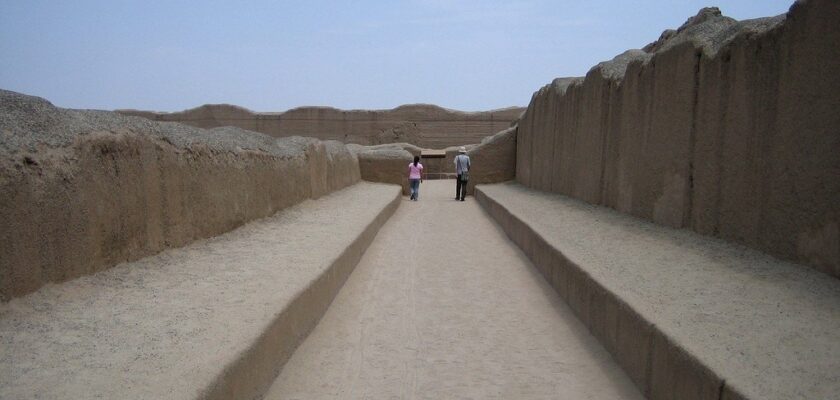Chan Chan
Chan Chan is the largest clay city in the world, where amazing metal work was done and houses were decorated with gold. It is the former center of Chimu culture and the capital of Chimor State. It is located on the Pacific coast in northern Peru, west of the city of Trujillo in the La Libertad region.
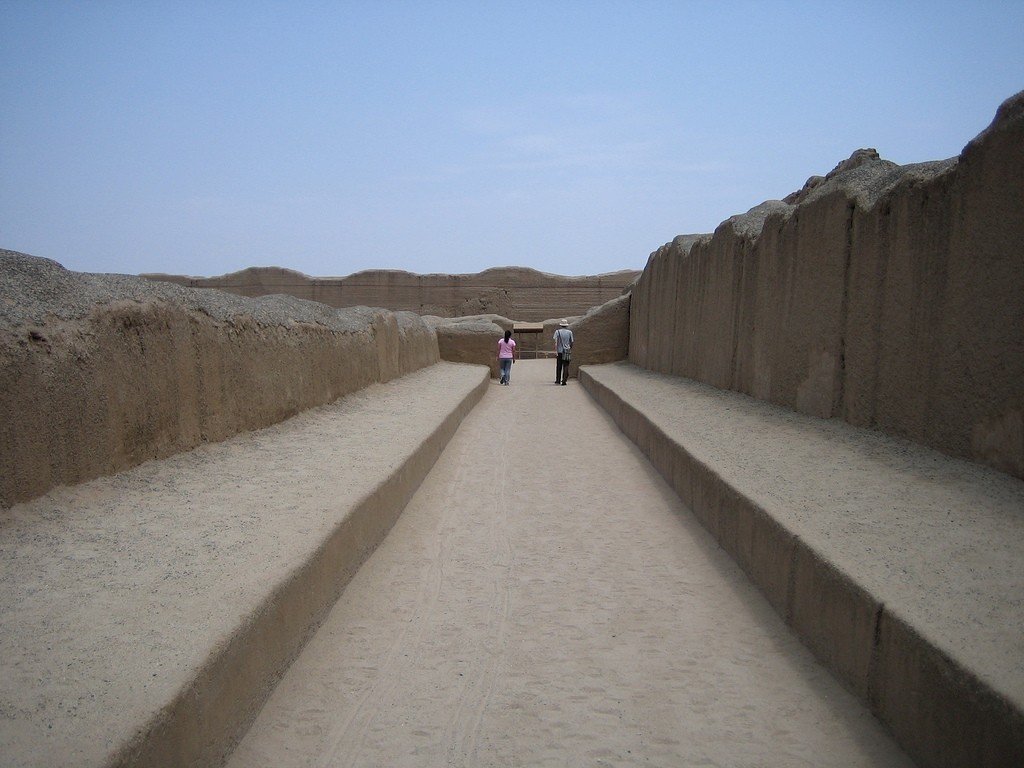
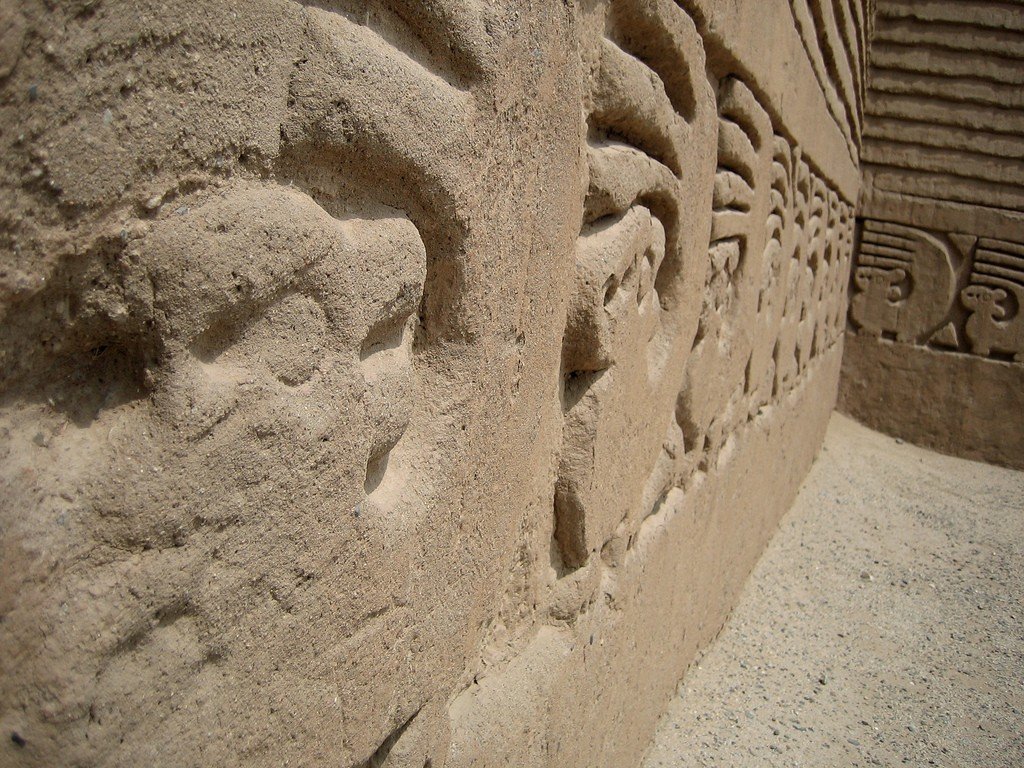
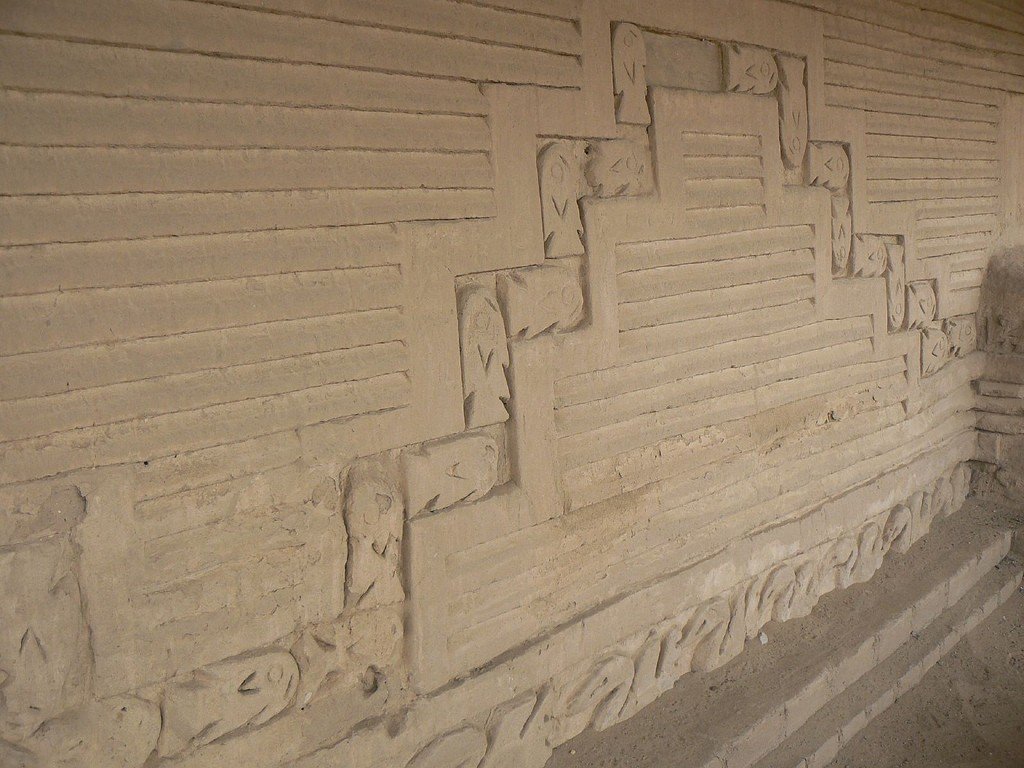
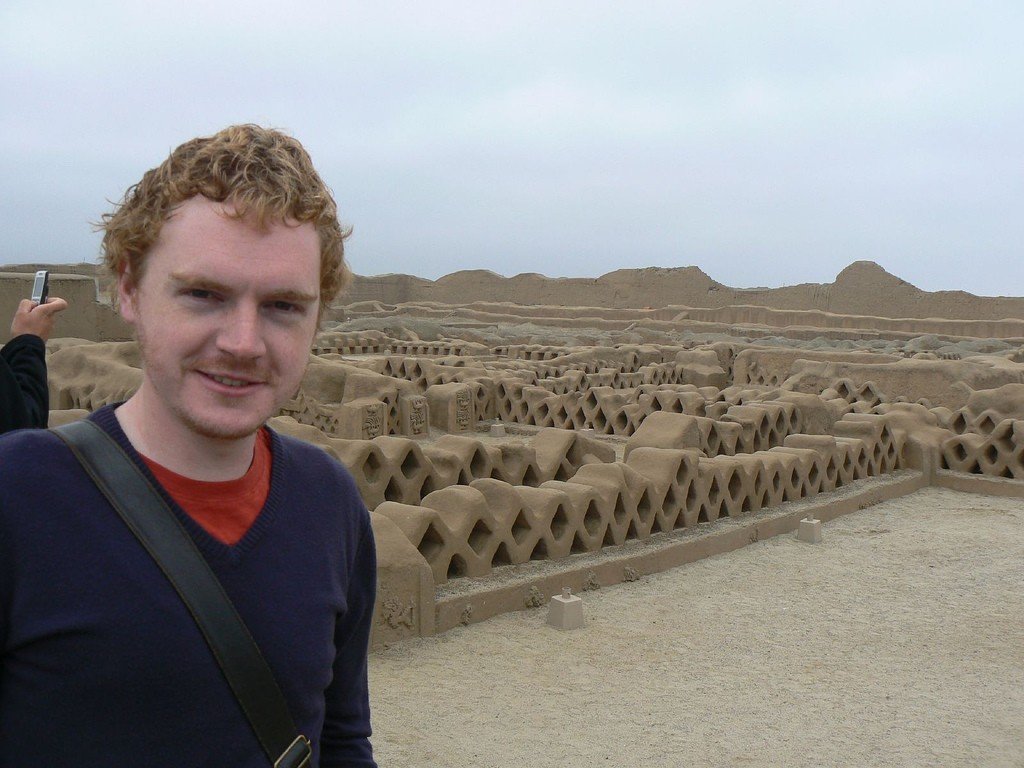
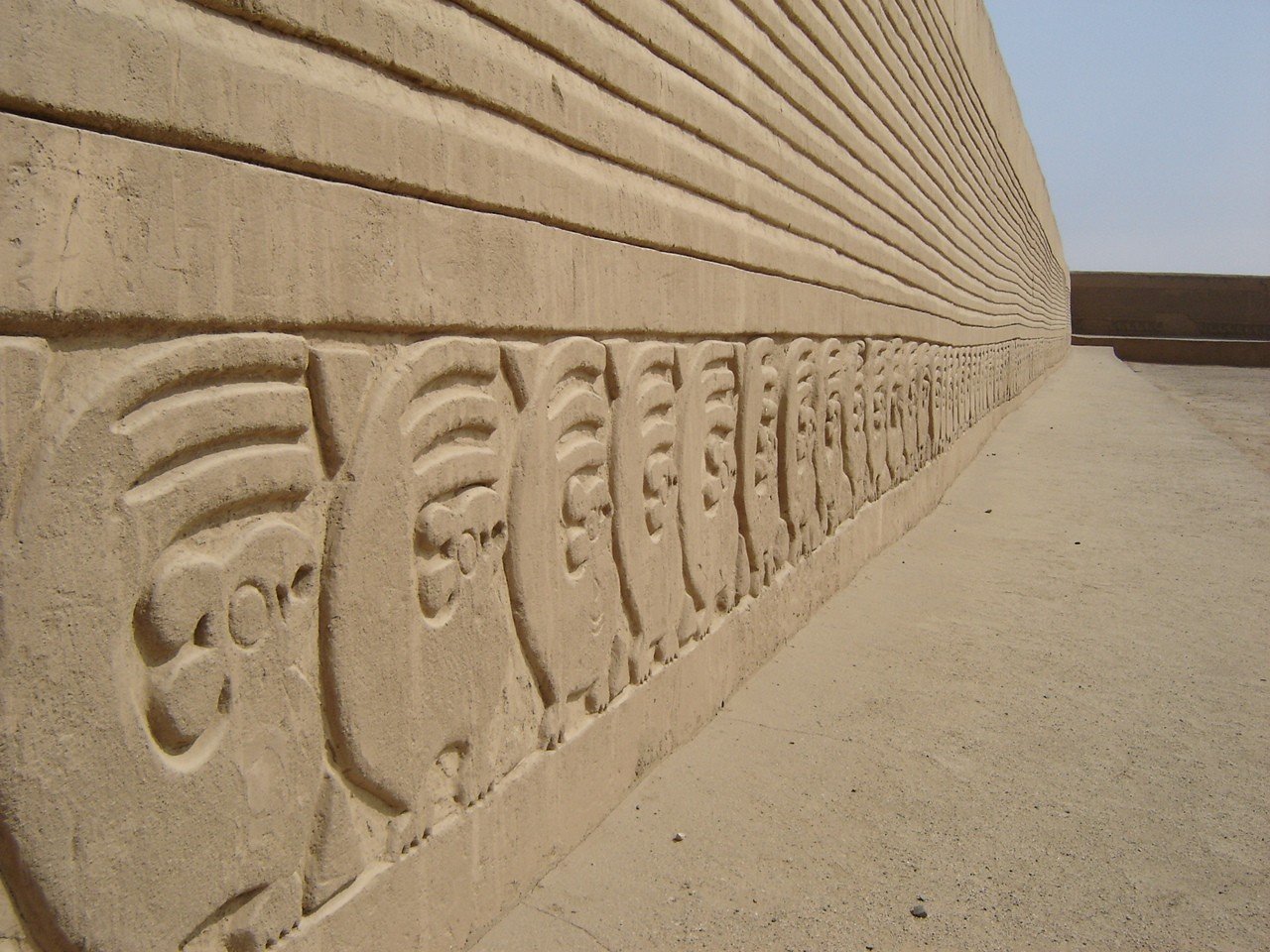
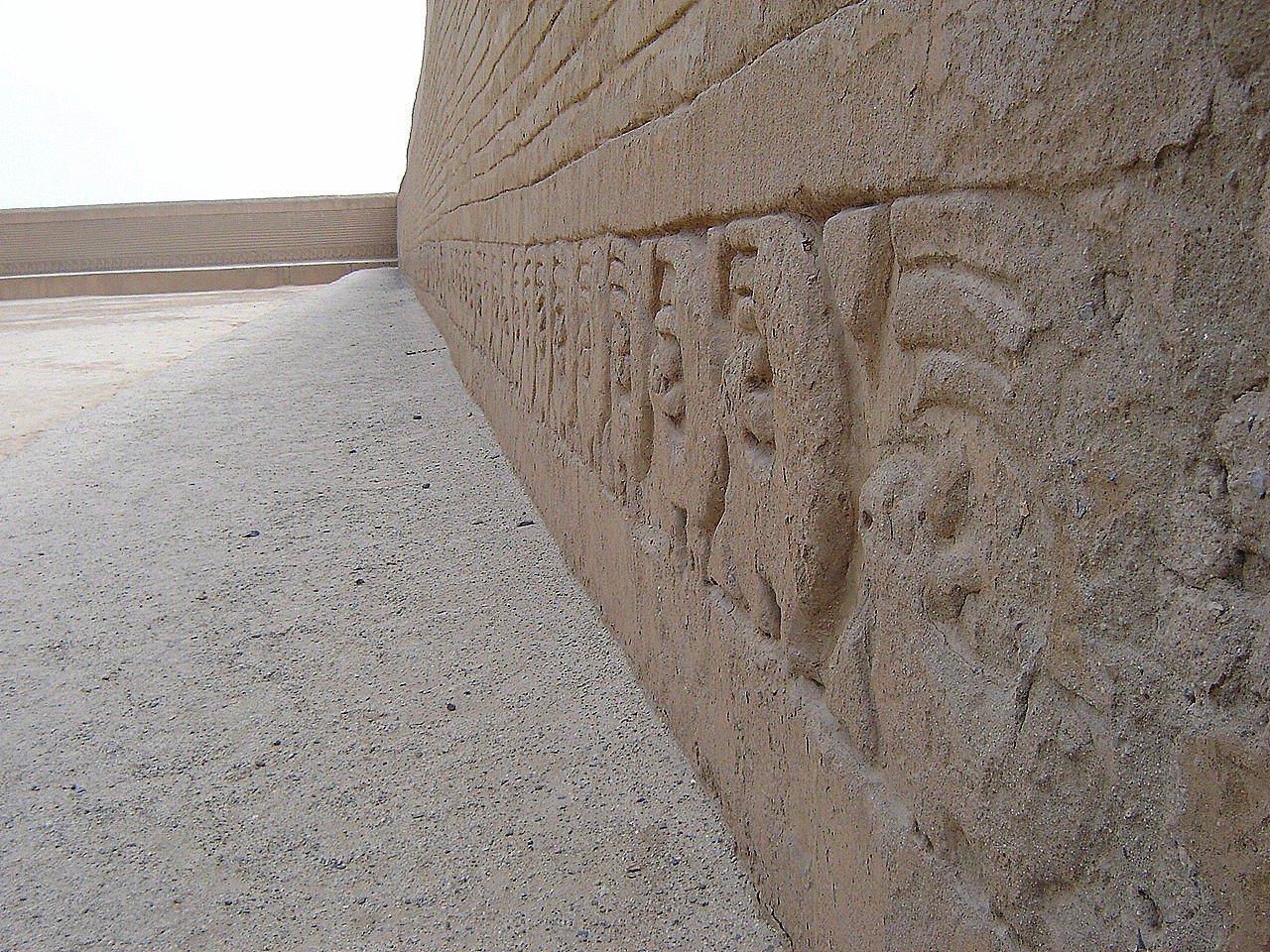
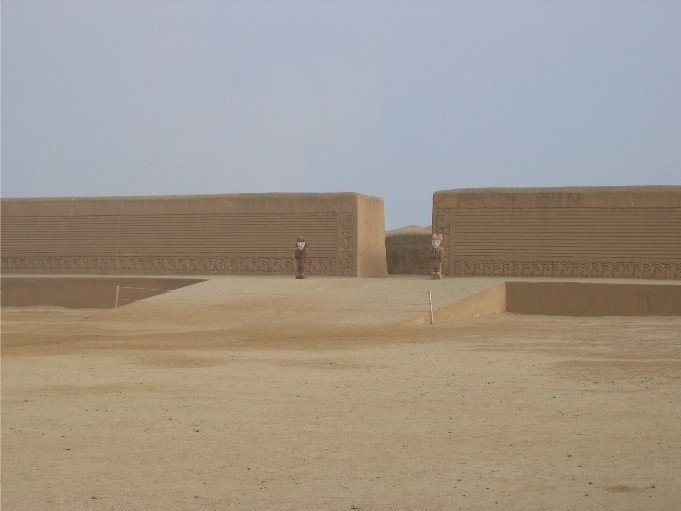
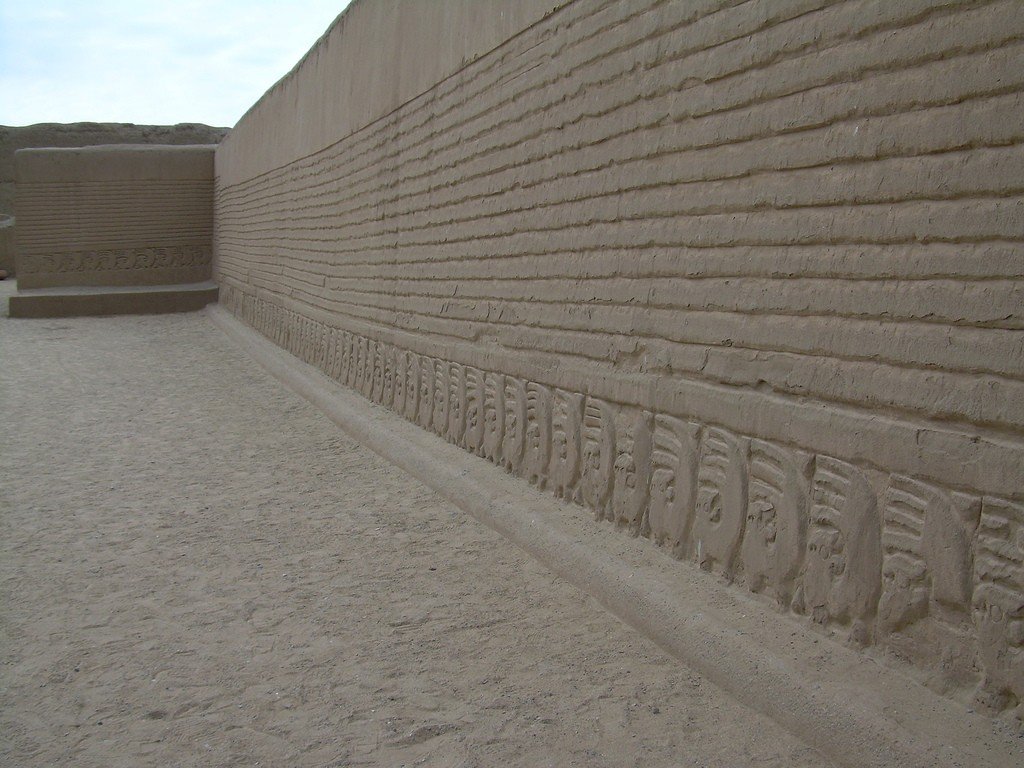
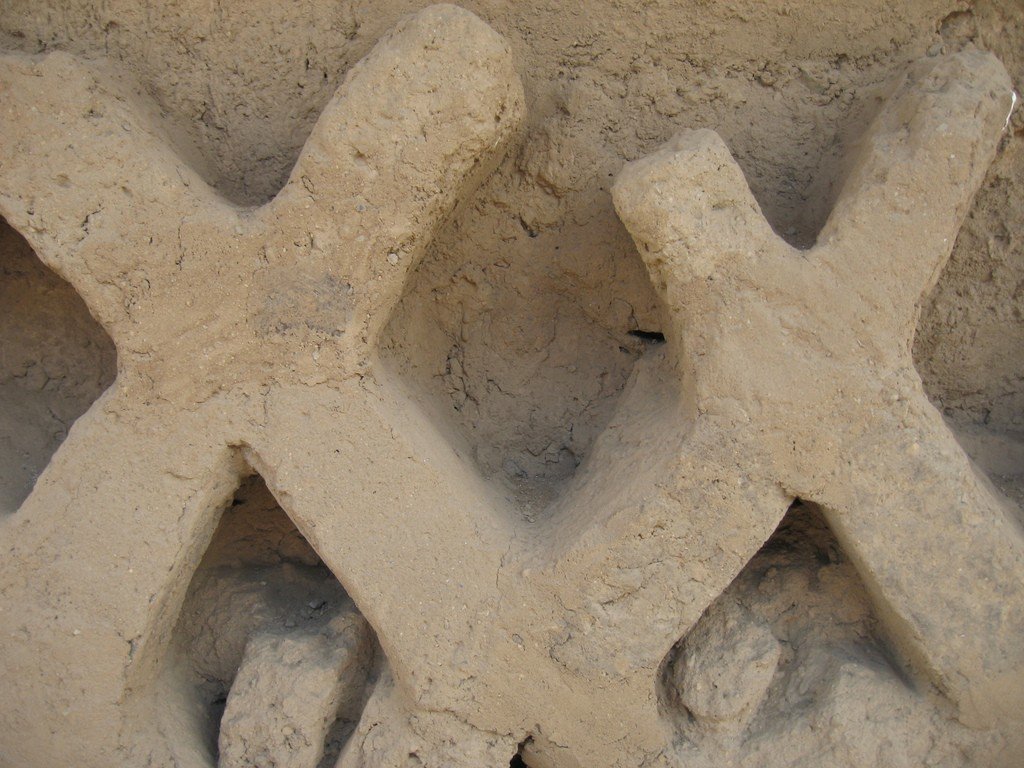
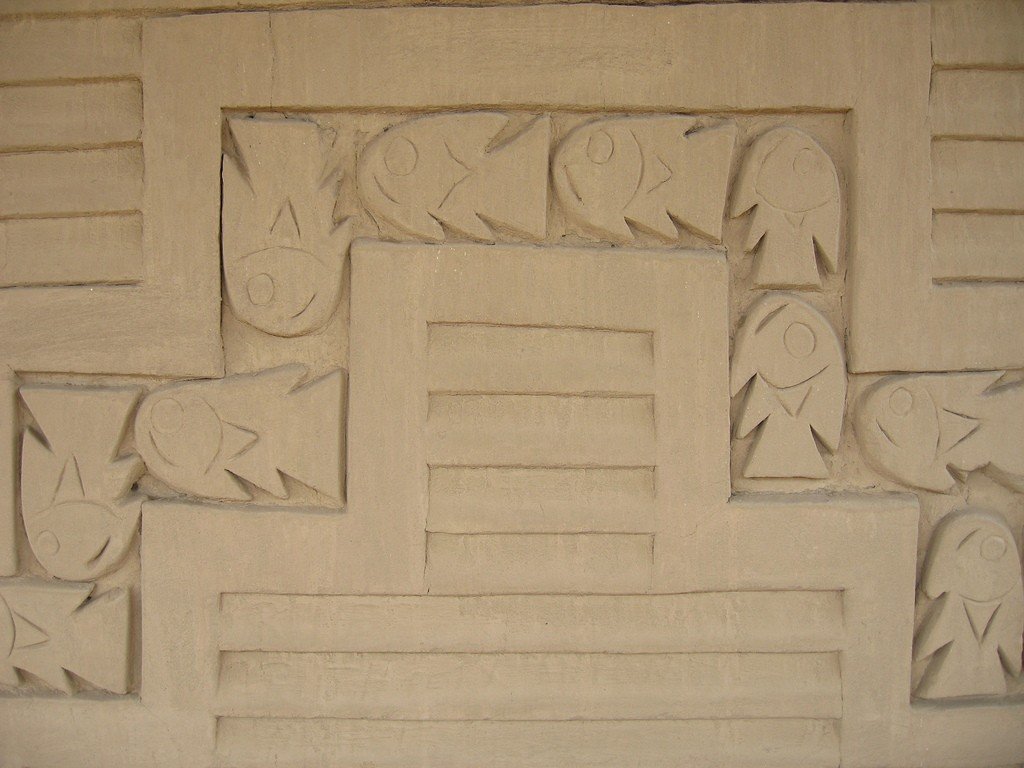
History
Legend has it that Chan Chan was founded by the creator of the Sun and Moon. Not far from the city of Trujillo, two pyramids rise in the valley of the Moche River. These are the temples of the Sun and the Moon. Researchers admit that both of them existed long before Chan Chan. They are attributed to the culture of the Moche Indians, the heyday of which falls on VI century A.D. However, some scientists date these structures two to three centuries later.
.
According to the official version, Chan Chan emerged around 1300 and to this day covers an area of about 28 km². It was probably the largest city of its time on the South American continent and one of the largest cities in the world built of adobe. During its greatest prosperity, it was home to about 60,000 people and the city stored gold, silver and pottery in large quantities.
.
From here, the Chimu lords ruled their empire, which stretched for nearly many kilometers along the Pacific coast. The heyday of their state occurred in the 12th century after the decline of the mighty Tiahuanaco culture. The Chimu Indians were very skillful architects and engineers. They were able to survive in these lands only because of a clever and complex water system. The Chimu made great strides in metalworking. It is believed that once the walls of the main buildings of the city were decorated with slabs of gold. Even today one can appreciate the refinement and beauty of ornaments made with clay bricks. However, all of Chiang Chan’s valuable jewelry has long since disappeared.
.
The Chimu capital consisted originally of nine autonomous districts, each ruled by a separate ruler who had shown valor in battle. These rulers were honored as kings. Each district had its own burial grounds with rich inclusions of gemstones, pottery, and with dozens of skeletons of young women.
The mainstay of the locals’ diet was fish and vegetables. They were enough to feed the entire population. No wonder the townspeople valued the water so much.
At the end of the XV century came the Inca invaders, but they could not take Chan Chan militarily. So the attackers built a dam to turn the river on which Chan Chan stood in a different direction. Only a shortage of water forced the besieged to surrender to the Incas in 1470. After the Inca conquest, the city began to lose its importance. However, it was not the Incas, who were more intent on expanding their empire than wealth, who destroyed and looted it. The destruction came when the Inca Empire was taken over by the Spanish. Conquistador Francisco Pizarro and his party opened the city to Europeans, looted what was left of the once mighty Chan Chan, after which the city was virtually wiped out. Little was left of the entire Chimu culture afterward.
In 1986, Chan Chan gained UNESCO World Heritage status. At the same time, due to climate change and increased destruction, the ruins of the city were placed on the Red List of World Heritage Sites in Danger of Destruction. Today, only a small part of Chan Chan remains, threatened by the climate, which has changed greatly in this part of the country – frequent tornadoes and heavy rains destroy the already weak material (mud bricks) from which the city was built. Today, only huge areas with dilapidated adobe houses and ruins of religious buildings remain.
Architecture
The best preserved area in Chan Chan is the Tschudi district, named after the Swiss explorer Johann Jakob von Tschudi. This neighborhood is gradually being restored and is open for tourists to visit. Here you can see some festive halls with luxurious ornaments. Until 1998, the adobe structures were covered with a special glaze that protected them from precipitation. Now, however, it was necessary to build steel scaffolding to prevent the ancient structures from being eroded.
.
Along with the neighborhoods of the poor, which consisted of mud huts and did not have an orderly layout, the city had residences of wealthy and noble citizens. The center of Chan Chan were “ciudadels” – huge, up to 10 hectares, rectangular compounds with walls made of raw material, rising to a height of up to 9 m. Their width at the base reached 4 – 5 meters. Ciudadels had only one entrance from the northern side, where wooden statues of guardian deities stood in special niches. The capital of Chimu consisted initially of ten autonomous districts – ciudadels, each of which was ruled by a separate ruler who had shown valor in battle. These rulers were honored as kings.
.Within each district there was an autonomous set of communications necessary for the life of the city. It was home to several thousand people and housed government offices, temples, private homes, and of course, one or two luxurious palaces. Each neighborhood was divided into three parts. In the first, northern part, there was a courtyard with a well, a large kitchen, storerooms and “audiences” – U-shaped buildings, considered purely administrative structures. The passage in the transverse wall led from here to the central part, where the main place was occupied by a raw material platform with burial chambers. It had its own burial places with rich inclusions of precious stones, pottery and dozens of skeletons of young women. It also had a kitchen, a well, storage facilities, and several audiences. A third part of the ciudadella was occupied by residential and outbuildings.
The center of the city is made up by the fortress-temple of Chudi. The Hall of 24 niches is particularly well preserved. Now it is a rectangular courtyard enclosed by a wall, in which niches for sitting were made. According to some hypotheses, the council of elders met here. The excellent acoustics allowed whispered conversations at quite a long distance, which is still possible today. According to another hypothesis, there were figures of gods in the niches. However, the purpose of many buildings in this city can only be guessed. Here you can also see the ruins of houses, a pool for collecting water, administrative buildings and platforms where various religious ceremonies took place.
.
The central compound was a palace complex, the front of which was used for the accumulation, storage and distribution of products collected by the state from both the rural district and the more distant territories subject to Chiang Chan. The burial platform in the central part of the ciudadela contained the tombs of the rulers and their relatives. This part clearly had a sacred character. The southern part of the complex was the dwelling place of the ruler, his family, numerous retinue and attendants. It is believed that after the death and burial of the next ruler, the sudadel was left behind. For each subsequent one, a new palace complex was built.
The countryside around Chiang Chan was occupied by fields irrigated by complex irrigation systems. These included a network of irrigation canals and trunk aqueducts. The largest of these, La Cumbre, was to transfer water from the Chicama River to the adjacent Moche Valley. Over time, under the influence of the gradual tectonic uplift of the Pacific coast, irrigation systems ceased to function and were rebuilt. At the same time, crop acreage steadily declined.
At the nodes of the irrigation system, settlements were located among the fields, and small compounds with audiences have been found in some of them. They apparently represented administrative centers that controlled the irrigation process and concentrated agricultural products, which were then transported to Chiang Chan’s state storage facilities.
.Fragments of this beautiful architecture are still discernible today. If necessary, the walls of the city could be used for its defense. However, their main purpose was to improve the lives of the townspeople. These walls dampened the wind blowing in from the sea. They were built of raw, clay bricks with patterned holes. The thick walls prevented hot air in summer and cold air in winter from entering the city. The lattice construction of the wall allows air to pass through it, giving up some of the heat to the cold stone in summer and conversely, warming from it, in winter. This original design optimizes the temperature regime at any time of the year. Residents have always experienced either moderate weather or low heat.
.
Black-lacquered and red-clay tableware was decorated with similar images, in which bottles with a staggered neck, dating back to the Mochica prototypes, vessels with a bridge-shaped handle and two-necked ones stand out. They were often made in molds and had a panel with an imprinted image on the body. Small sculpted figures of a monkey or a bird at the base of the vessel’s throat are very characteristic. The images on pottery, as well as those displaced on metal ware, show a certain continuity with the images of Mochica art, but with traces of a noticeable influence of mountain cultures. The figure of an anthropomorphic deity in a complex headdress and with disc-shaped earrings stands out.
.
Chudi Temple and Fortress forms one of the ten districts that make up Chan Chan City. Other attractions in the city include the Emerald Temple (Huaka Esmeralda) and the Rainbow Temple (Templo del Arco Iris), also called the Temple of the Dragon (Huaka del Dragon). The Emerald Temple was excavated in 1923, and two years later was badly damaged by torrential rains. It is a building in the shape of a two-tiered pyramid, extremely richly decorated with relief ornaments with motifs of marine life. The Rainbow Temple has the same rich and varied decoration.
.The Temple of the Sun stands on a massive platform 18 meters high, it is a giant structure made of clay bricks. The lower tier of the rectangular pyramid measures 228 x 136 meters and the temple is 23 meters high. The nearby Temple of the Moon may have been built at the same time. Archaeologists believe that both of these structures belong to an important ritual center associated with the cult of the dead. The remains of a large cemetery have been discovered here. Other sacred structures stood next to the temples.
.The Temple of the Moon, is known for its amazing frescoes depicting weapons that take on a human likeness and attack people. This motif is often found in Moche pottery, another argument in favor of the assumption that both temples were built in the 6th century AD.
There are no significant quarries on the coastal plains of Peru, which stretch in a strip between the Andes and the Pacific Ocean. The main building material here has long been adobe, a sun-dried clay brick.
.
The city has many wide streets separated by high walls. In the past, the walls were decorated with golden figures that have long since disappeared. Despite the looting, there is still a lot of evidence of the amazing architectural talent of the Chimukese.
The Chimukese proximity to nature is reflected in the architectural style. Some walls are decorated with images of sea deities, fish and birds. Many of the drawings have been reconstructed from sketches, but others have remained unchanged for 700 years. These images can tell the story of ancient, religious rituals. There are many fish and pelicans.
.The Chimuki worshipped the sea, water deities in the form of fish. They also deified fresh water, the source of life, and created an irrigation system. On bas-reliefs water is represented by a horizontal line. Water was the source of prosperity for the Chimuk people. It was also the cause of its disappearance, but traces of the Chimuk civilization testify to its high level of development.
.
Anyone can see how big the city of Chiang Chan was. Its buildings extend as far as the eye can see. Behind one wall, another begins immediately. From anywhere in the city, you can see the ocean. Water everywhere and the sound of the surf. It’s a monument to a civilization that lived by the gifts of the sea, gathering and fishing.
There is even a ritual water body. Today it serves as an ornament to the city, but in the past it was used to grow sea plants and supply the population with water. The locals dug an excavation to reach the aquifers. There is not a gram of salt in this water.
